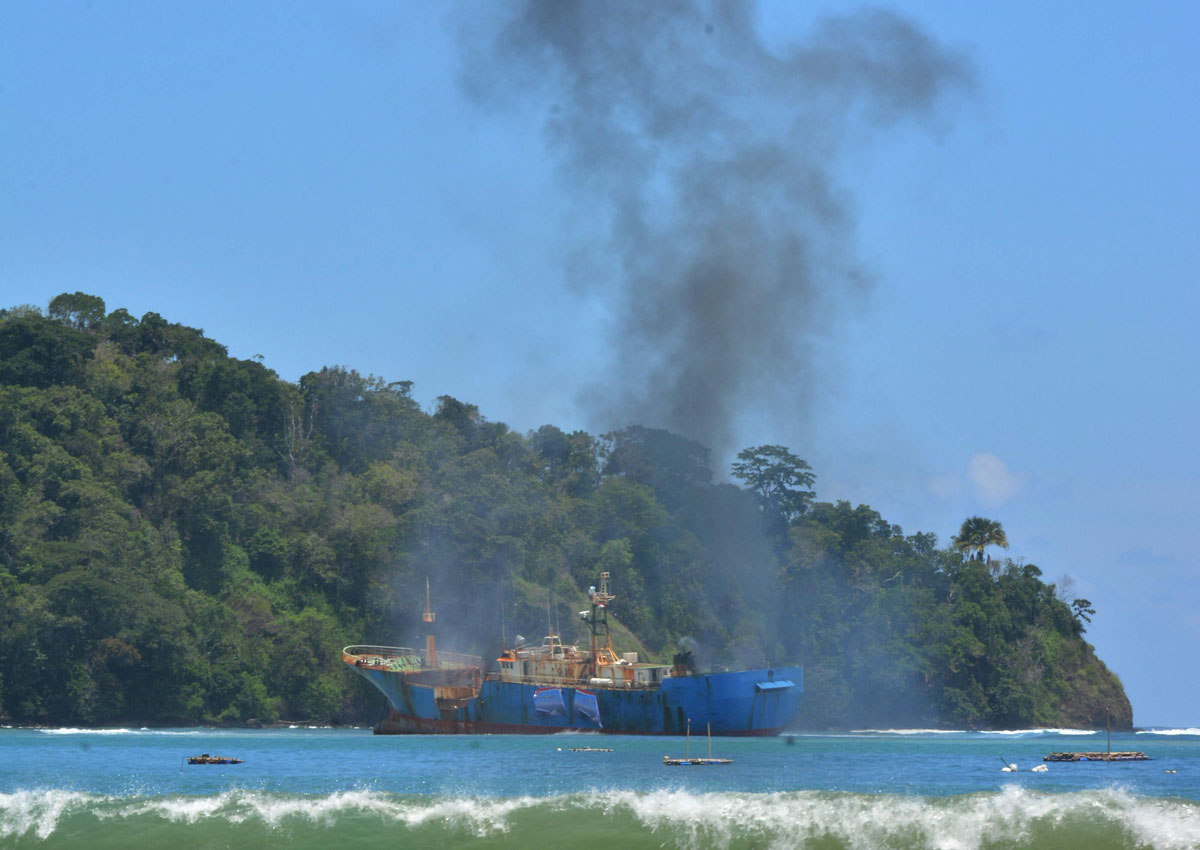The Indonesian minister at the forefront of the country’s latest dispute with China in the Natunas, has been on the warpath against illegal fishing since she took office.
Maritime Affairs and Fisheries Minister Susi Pudjiastuti, who was appointed to President Joko Widodo’s Cabinet in late 2014, has since ordered the sinking of 152 vessels caught poaching in Indonesian waters.
The bulk of the culprits are from Vietnam (50) and the Philippines (43), but they also include 14 Indonesia-flagged vessels without permits.
Only one was from China, the country where the Kway Fey, the fishing boat that sparked the latest tensions between the two nations, is from, the Ministry of Maritime Affairs and Fisheries said last week.
The Chinese boat was stopped by the local maritime authorities on March 19 after it was spotted fishing illegally in Indonesian waters. But a Chinese coast guard patrol boat later prevented its Indonesian counterpart from towing it back to base.

The incident has spiralled into a rare territorial dispute between the two countries, with Indonesia taking an uncharacteristically hard stance.
Ms Susi has demanded that Beijing return the Kway Fey to Indonesia so that she can sink it – to send a strong signal to poachers.
The incident last weekend is the third known skirmish between a China-flagged vessel and the Indonesian maritime authorities.
In March 2013, an armed Chinese coast guard vessel confronted an Indonesian patrol craft and demanded the release of Chinese fishermen apprehended in the Natunas.
There was a similar incident in 2010.
According to President Joko, Indonesia suffers annual losses of more than US$20 billion (S$27.4 billion) from illegal fishing.
Ms Susi has been the main driver behind the President’s plan to revive the shipbuilding and fisheries industries in a bid to re-establish Indonesia as a maritime power.
To achieve the goal, Indonesia has been trying to maximise the potential of the sector through, among other things, modernisation of current industry practices, abolishing trans-shipment activities, and going after poachers.
Enforcement efforts have been ramped up in recent years, including the enhancement of its maritime surveillance capabilities.
Indonesian Defence Minister Ryamizard Ryacudu said in December last year that Indonesia will deploy a fleet of jet fighters as well as increase the number of navy vessels and troops in the Natuna Islands.
The Navy chief of staff, Admiral Ade Supandi, said the ramping up of military assets in the area will occur only if there is an escalation in the crisis which he described as “a fishing dispute” and not “a defence issue”.
Currently, there are five naval warships patrolling the Natunas and the Karimata Strait, he added.
Defence experts say Indonesia’s naval assets are no match for China’s massive maritime force, which includes a coast guard unit that operates what have been referred to as “monster” vessels, 10,000-ton patrol ships able to reach a speed of 25 knots or 46kmh.
Mr Emirza Adi Syailendra, a defence analyst from the S. Rajaratnam School of International Studies, said that despite plans to boost Indonesia’s maritime presence, those efforts had been limited to the development of infrastructure with little attention given to defence. “That is why Indonesia is still unable to rely on its navy or coast guard to be an effective deterrent, and will still have to turn to diplomacy,” he said.

This article was first published on March 27, 2016.
Get a copy of The Straits Times or go to straitstimes.com for more stories.





